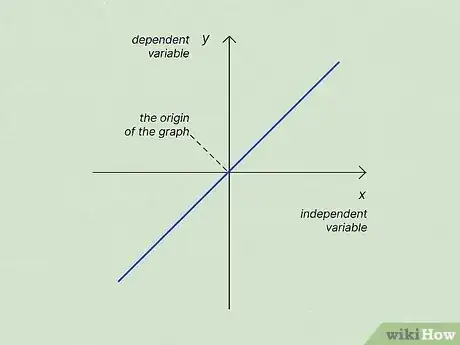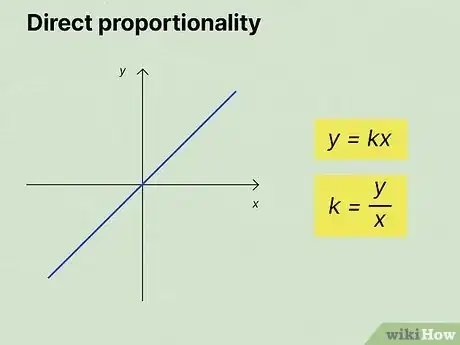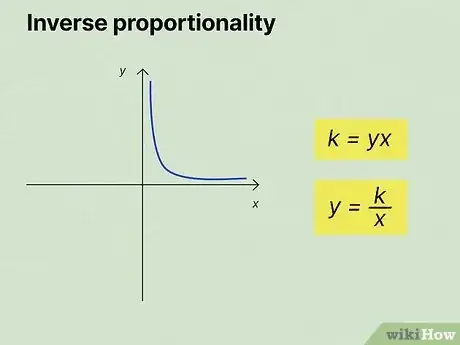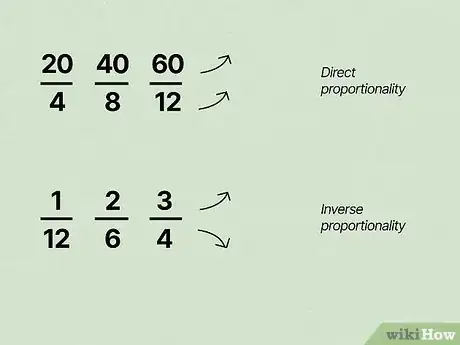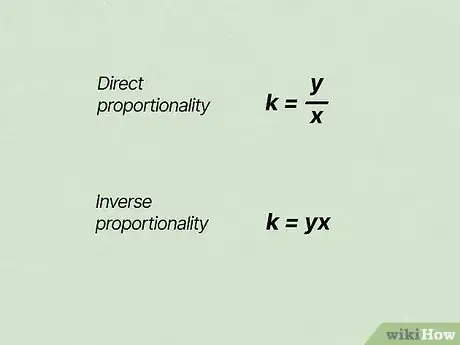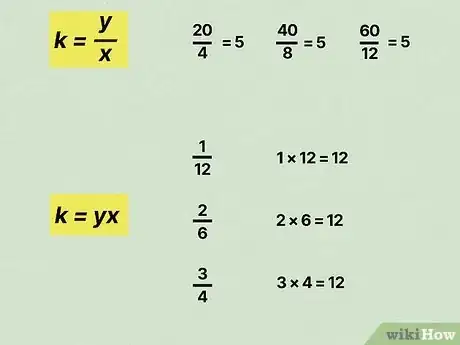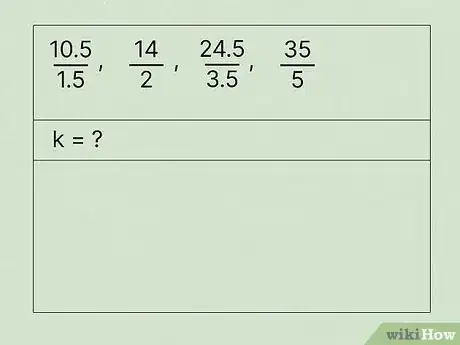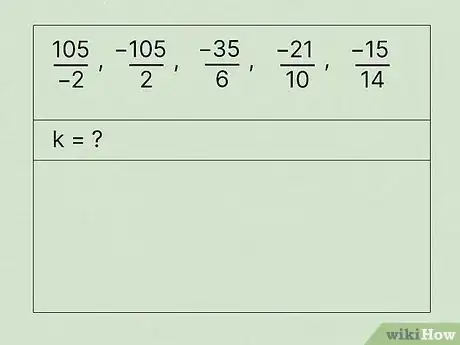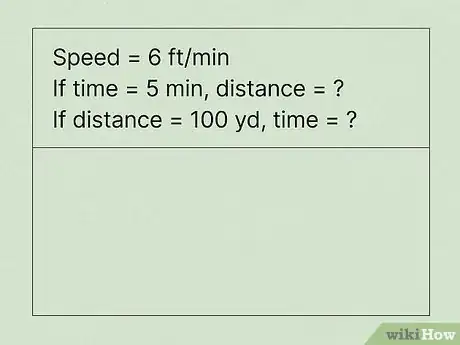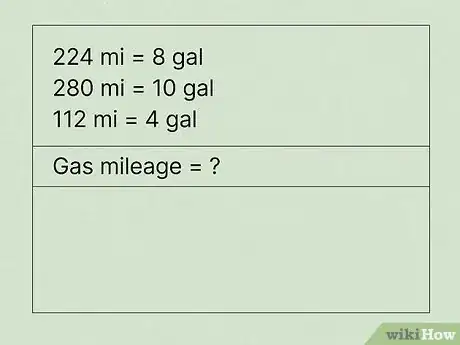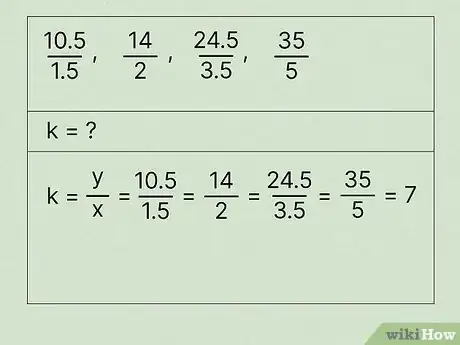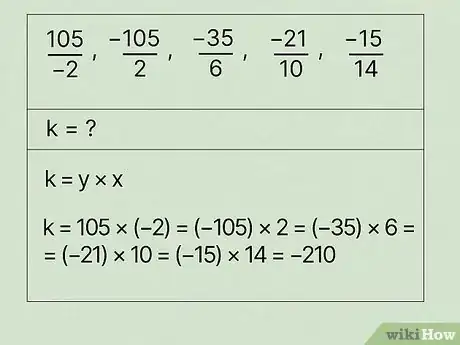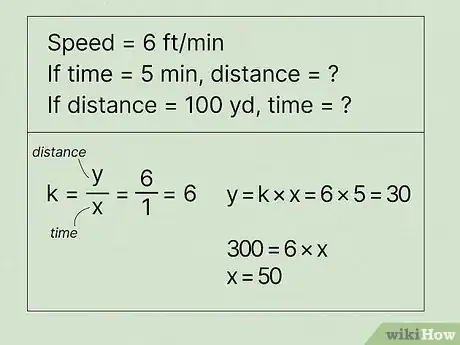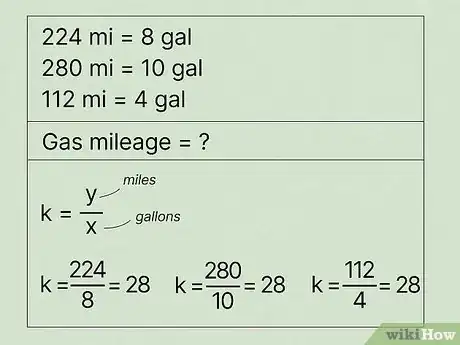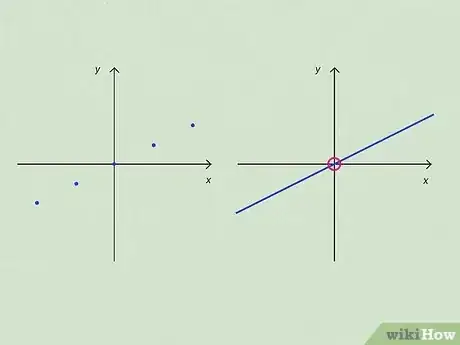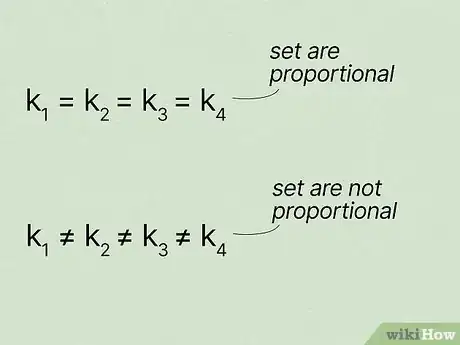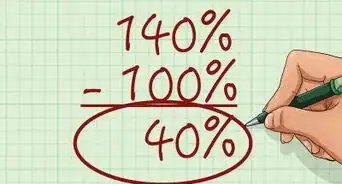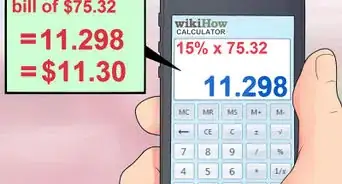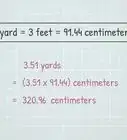This article was co-authored by wikiHow staff writer, Jennifer Mueller, JD. Jennifer Mueller is a wikiHow Content Creator. She specializes in reviewing, fact-checking, and evaluating wikiHow's content to ensure thoroughness and accuracy. Jennifer holds a JD from Indiana University Maurer School of Law in 2006.
This article has been viewed 1,607 times.
Learn more...
The constant of proportionality tells you how much two sets of variables change. But how do you find it? You can figure it out by using a graph or an equation, and it's pretty simple to master. It's also something that you'll find you use all the time in real life, whether you're trying to calculate a discount at a store or figure out if you have enough gas in your car to make it to the next gas station. Read on to learn everything you need to know about the constant of proportionality, then try your hand at the practice problems. You've got this!
Things You Should Know
- Find the constant of proportionality using the equation when ratios are directly proportional (both increase at the same rate).
- Find the constant of proportionality using the equation when ratios are inversely proportional (one increases as the other decreases at the same rate).
- Use the constant of proportionality to determine what value will be at any value of so you can graph the coordinates.
Steps
Finding the Constant of Proportionality with Ratios
-
1Set up each ratio as a fraction. In a ratio, the first number is the denominator of the fraction and the second number is the numerator. On a graph, the coordinate of any point is the denominator, while the coordinate is the numerator.[6]
- For example, the ordered pairs , , and are the same as the ratios , , and . As fractions, they are , , and .
-
2Determine whether you're looking at direct or inverse proportionality. Look at the numbers in the set of ratios you've been given. If they all increase, they're directly proportional. On the other hand, if one set of values increases and the other set of values decreases, you've got inverse proportionality.
- For example, look at the set , , and . In each ratio, the values of the numerator and the denominator both increase, so you're looking at direct proportionality.
- What if you had , , and ? The values of the denominator decrease as the values of the numerator increase, so you're looking at inverse proportionality.
-
3Plug the values from one of the ratios into the proper equation. If the ratios have direct proportionality, use the equation . For inverse proportionality, use the equation .[7]
- To continue from the previous example, take the first ratio of . Since the set is directly proportional, you'd use . Your constant of proportionality is .
- What about the inverse set? Take the ratio and plug the numbers into the equation to get . Your constant of proportionality is .
-
4Check your work with the other ratios. If the ratios are proportional, the constant of proportionality will be the same for all of them. If any of them are different, then the ratios aren't proportional and there is no constant of proportionality.[8]
- Try this on your own with the ratios in the set , , and . You'll see that you get for each ratio, which tells you this ratios are indeed directly proportional!
- This also applies to ratios that are inversely proportional. For example, in the set , , and , plugging each ratio into the equation gets you a constant of for each ratio, so they are inversely proportional.
-
5Determine other values in the series using the constant of proportionality. Now that you know the constant of proportionality, you can figure out what the value of would be for any value of .[9]
- Use the equation if the set of ratios is directly proportional. If is and is , would be ().
- Use the equation if the set of ratios is inversely proportional. If is and the constant of proportionality is , would be ().
Practice Problems
-
1Find the constant of proportionality for , , , and .[10]
- Hint: All of the values increase, so use the equation for direct proportionality: .
-
2Find the constant of proportionality for , , , , and .[11]
- Hint: The values are decreasing, so use the equation for inverse proportionality: .
-
3The slowest mammal in the world, the sloth, moves at a rate of feet per minute. How far will Flash the sloth have gone in minutes? And how long will it take Flash to complete the 100-yard dash?[12]
- Hint: 100 yards is 300 feet.
-
4You're on a road trip. Each time you get gas, you record the number of miles you drove and the amount of gas your car used: miles on gallons, miles on gallons, and miles on gallons. What is your car's gas mileage?[13]
- Hint: Gas mileage is the number of miles your car can drive on one gallon of gas, so you're looking for the constant of proportionality here.
Solutions to Practice Problems
-
1The constant of proportionality is . If you remember your multiplication tables, you know that and simplify to . When you do the basic math for the other two ratios in the set, you find that both and also simplify to , so that's your answer.[14]
- Since all the ratios in the set have the same constant and the values are all increasing, you also know that this series is directly proportional.
-
2The constant of proportionality is . Since the values are decreasing, you simply multiply the numbers together to get a value for the constant of proportionality, using the equation . Before you even start multiplying, you can already tell that each of the ratios is going to simplify to a negative number. All that's left is to multiply each ratio to see that they all simplify to :[15]
- For , .
- For , .
- For , .
- For , .
- For , .
- Since all of the ratios have the same constant of proportionality, they are inversely proportional.
-
3Flash will go feet in minutes and complete the 100-yard dash in minutes. Start this problem by finding the constant of proportionality. You know you're going to be working with directly proportionate ratios because the more minutes pass, the further Flash will go, so you use the equation . The distance Flash goes depends on how long he's moving, so distance is the variable and time is the variable. You've been told that Flash goes feet in minute, so that makes his constant of proportionality ().[16]
- To find how far Flash will go in minutes, use the equation for direct proportionality, . Here, is , so your answer is ().
- To find out how long it will take Flash to complete the 100-yard (300 feet) dash, use the same equation, but solve for instead. Start with , then divide each side by to get your answer, .
-
4Your car gets miles to the gallon. The numbers for gallons of gas aren't in sequential order, but if you shuffle them around, you see that the values for both gas and miles driven are increasing—so this is a direct proportionality problem. The number of miles you drive depends on the gallons of gas you have in your car, so miles driven is the variable, and gallons of gas is the variable. Now, all you need to do is plug those values into the equation for direct proportionality:[17]
References
- ↑ https://www.clevelandmetroschools.org/cms/lib/OH01915844/Centricity/Domain/274/Determining%20the%20Constant%20of%20Proportianality.pdf
- ↑ https://www.math4texas.org/Page/637
- ↑ https://www.edencsd.org/cms/lib/NY19000545/Centricity/Domain/96/Lesson%208%20KEY%20HRS.pdf
- ↑ https://www.math4texas.org/Page/637
- ↑ https://users.math.msu.edu/users/linmu/Teaching/SS2013/MTH124/Chap1S1_9.pdf
- ↑ https://www.clevelandmetroschools.org/cms/lib/OH01915844/Centricity/Domain/274/Determining%20the%20Constant%20of%20Proportianality.pdf
- ↑ https://www.cwcboe.org/cms/lib/NJ01001185/Centricity/Domain/720/1.5%20Notes%20Day%202.pdf
- ↑ https://www.cwcboe.org/cms/lib/NJ01001185/Centricity/Domain/720/1.5%20Notes%20Day%202.pdf
- ↑ https://users.math.msu.edu/users/linmu/Teaching/SS2013/MTH124/Chap1S1_9.pdf
- ↑ https://www.petalschools.com/cms/lib/MS01000823/Centricity/Domain/669/COP%20Practice.pdf
- ↑ https://users.math.msu.edu/users/linmu/Teaching/SS2013/MTH124/Chap1S1_9.pdf
- ↑ https://www.cwcboe.org/cms/lib/NJ01001185/Centricity/Domain/720/1.5%20Notes%20Day%202.pdf
- ↑ https://www.edencsd.org/cms/lib/NY19000545/Centricity/Domain/96/Lesson%208%20KEY%20HRS.pdf
- ↑ https://www.petalschools.com/cms/lib/MS01000823/Centricity/Domain/669/COP%20Practice.pdf
- ↑ https://users.math.msu.edu/users/linmu/Teaching/SS2013/MTH124/Chap1S1_9.pdf
- ↑ https://www.cwcboe.org/cms/lib/NJ01001185/Centricity/Domain/720/1.5%20Notes%20Day%202.pdf
- ↑ https://www.edencsd.org/cms/lib/NY19000545/Centricity/Domain/96/Lesson%208%20KEY%20HRS.pdf
- ↑ https://www.cwcboe.org/cms/lib/NJ01001185/Centricity/Domain/720/1.5%20Notes%20Day%202.pdf
- ↑ https://www.clevelandmetroschools.org/cms/lib/OH01915844/Centricity/Domain/274/Determining%20the%20Constant%20of%20Proportianality.pdf
- ↑ https://www.petalschools.com/cms/lib/MS01000823/Centricity/Domain/669/COP%20Practice.pdf




